Papilionoidea
True Butterflies
Andrew V. Z. Brower


This tree diagram shows the relationships between several groups of organisms.
The root of the current tree connects the organisms featured in this tree to their containing group and the rest of the Tree of Life. The basal branching point in the tree represents the ancestor of the other groups in the tree. This ancestor diversified over time into several descendent subgroups, which are represented as internal nodes and terminal taxa to the right.

You can click on the root to travel down the Tree of Life all the way to the root of all Life, and you can click on the names of descendent subgroups to travel up the Tree of Life all the way to individual species.
For more information on ToL tree formatting, please see Interpreting the Tree or Classification. To learn more about phylogenetic trees, please visit our Phylogenetic Biology pages.
close boxIntroduction
The "true" butterflies are composed of five families - Papilionidae, Pieridae, Nymphalidae, Riodinidae and Lycaenidae. There are estimated to be some 13,700 species extant in the world (Robbins, 1982), distributed on every continent except Antarctica, and most remote oceanic islands as well. The greatest diversity occurs in tropical regions, particularly the neotropics.
Discussion of Phylogenetic Relationships
The hypothesis presented has been repeatedly corroborated by numerous authors (Kristensen 1976, de Jong et al. 1996, Ackery et al. 1999, Wahlberg et al. 2005).
References
Ackery, P. R., R. de Jong, and R. I. Vane-Wright. 1999. The butterflies: Hedyloidea, Hesperioidea, and Papilionoidea. Pages 264-300 in: Lepidoptera: Moths and Butterflies. 1. Evolution, Systematics, and Biogeography. Handbook of Zoology Vol. IV, Part 35. N. P. Kristensen, ed. De Gruyter, Berlin and New York.
Boggs, C. L., W. B. Watt, and P. R. Ehrlich, eds. 2003. Butterflies: Ecology and Evolution Taking Flight. University of Chicago Press, Chicago and London.
Campbell, D. L., A. V. Z. Brower, and N. E. Pierce. 2000. Molecular evolution of the wingless gene and its implications for the phylogenetic placement of the butterfly family Riodinidae (Lepidoptera: Papilionoidea). Molecular Biology and Evolution 17(5):684-696.
de Jong, R., R. I. Vane-Wright, and P. R. Ackery. 1996. The higher classification of butterflies (Lepidoptera): problems and prospects. Entomologica Scandinavica 27(1):65-101.
Kristensen N. P. 1976. Remarks on the family-level phylogeny of butterflies (Insecta, Lepidoptera, Rhopalocera). Zeit. Zool. Syst. Evol. 14: 25-33.
Kristensen, N. P. and A. W. Skalski. 1999. Phylogeny and paleontology. Pages 7-25 in: Lepidoptera: Moths and Butterflies. 1. Evolution, Systematics, and Biogeography. Handbook of Zoology Vol. IV, Part 35. N. P. Kristensen, ed. De Gruyter, Berlin and New York.
Minet, J. 1991. Tentative Reconstruction of the ditrysian phylogeny (Lepidiptera, Gloassata). Entomologica Scandinavica 22(1):69-95.
Paulus, H. F., and H. W. Krenn. 1996. Comparative morphology of the butterfly proboscis and its sensilla - A contribution to the phylogenetic systematics of Papilionoidea (Insecta, Lepidoptera). Journal of Zoological Systematics and Evolutionary Research 34(4):203-216.
Robbins R. K. 1982. How many butterfly species? News Lepid. Soc. 1982: 40-41.
Wahlberg, N., M. F. Braby, A. V. Z. Brower, R. de Jong, M.-M. Lee, S. Nylin, N. E. Pierce, F. A. H. Sperling, R. Vila, A. D. Warren, and E. Zakharov. 2005. Synergistic effects of combining morphological and molecular data in resolving the phylogeny of butterflies and skippers. Proceedings of the Royal Society Series B 272:1577-1586.
Weller, S. J. and D. P. Pashley. 1995. In seach of butterfly origins. Molecular Phylogenetics and Evolution 4(3):235-246.
Information on the Internet
- Butterflies and Moths of North America. Occurrence maps, species accounts, checklists, and photographs.
- Mariposas Mexicanas: Interactive Listing of Mexican Butterflies. Warren, A. D., J. E. Llorente-Bousquets, A. Luis-Mart?nez & I. Vargas-Fern?ndez.
- Neotropical Butterflies. A Photo Gallery featuring butterflies from Mexico through Central America to Amazonia and Argentina.
- Butterflies and Moths of the Netherlands.
- FieldGuides: Butterflies. enature.com
- BugGuide.Net: Superfamily Papilionoidea - Butterflies. Identification, Images, & Information For Insects, Spiders & Their Kin For the United States & Canada.
- Butterflies of Southeastern Arizona. Bruce Walsh, University of Arizona.
- Butterflies at the Field Museum. The Field Museum, Chicago.
- The Butterfly Conservatory. Movie clips and live butterfly web cam. American Museum of Natural History, New York.
- North American Butterfly Association (NABA). A membership-based not-for-profit organization working to increase public enjoyment and conservation of butterflies.
- Butterfly Conservation. Protecting wild butterflies and their habitats in the UK.
- Where do butterflies come from?. An activity for children. Howard Hughes Medical Institute.
Title Illustrations

| Scientific Name | Lycaeides ricei |
|---|---|
| Location | North Tahoe (Plumas County, California, USA) |
| Comments | Anna blue butterfly |
| Creator | T. W. Davies |
| Acknowledgements | Courtesy CalPhotos |
| Specimen Condition | Live Specimen |
| Copyright |
© 1999 California Academy of Sciences

|
| Scientific Name | Junonia almana |
|---|---|
| Location | Taiwan |
| Specimen Condition | Live Specimen |
| Source | IMG_9360_ajs1 |
| Source Collection | Flickr |
| ToL Image Use |
 This image is licensed under the Attribution-NonCommercial-NoDerivs 2.0 Creative Commons License. This image is licensed under the Attribution-NonCommercial-NoDerivs 2.0 Creative Commons License.
|
| Copyright | © 2005 leemt2 |
| Scientific Name | Apodemia mormo langei |
|---|---|
| Specimen Condition | Live Specimen |
| Source Collection | U.S. Fish and Wildlife Service Online Digital Media Library |
| Scientific Name | Pieris brassicae |
|---|---|
| Location | near Fountains Abbey, Yorkshire, England |
| Specimen Condition | Live Specimen |
| Source | White Butterfly |
| Source Collection | Flickr |
| ToL Image Use |
 This image is licensed under the Attribution-NoDerivs 2.0 Creative Commons License. This image is licensed under the Attribution-NoDerivs 2.0 Creative Commons License.
|
| Copyright | © 2005 Paul Stevenson |
| Scientific Name | Papilo demodocus demodocus |
|---|---|
| Location | Muldersdrift, Gauteng, South Africa |
| Acknowledgements | source: flickr: Beauty on Duty |
| Specimen Condition | Live Specimen |
| Copyright |
© 2007 Callie de Wet

|
About This Page

Middle Tennessee State University, Murfreesboro, Tennessee, USA
Correspondence regarding this page should be directed to Andrew V. Z. Brower at
Page copyright © 2007
- Content changed 01 April 2007
Citing this page:
Brower, Andrew V. Z. 2007. Papilionoidea . True Butterflies. Version 01 April 2007 (under construction). http://tolweb.org/Papilionoidea/12027/2007.04.01 in The Tree of Life Web Project, http://tolweb.org/




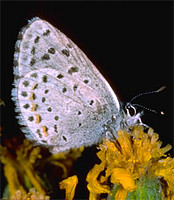
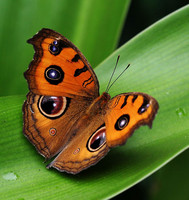
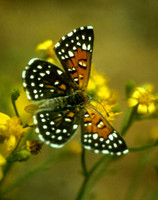
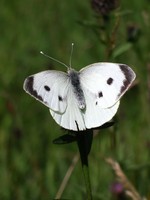
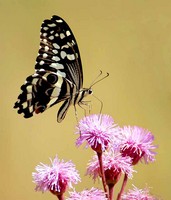






 Go to quick links
Go to quick search
Go to navigation for this section of the ToL site
Go to detailed links for the ToL site
Go to quick links
Go to quick search
Go to navigation for this section of the ToL site
Go to detailed links for the ToL site